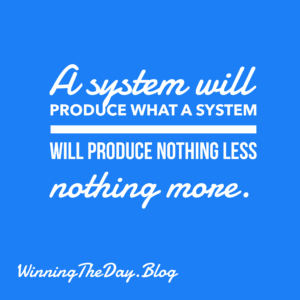In real estate, we live in a world of variables. We’re juggling fluctuating interest rates, unpredictable client emotions, and a market that can turn on a dime. For broker owners, team leaders, and top-producing agents, the desire for control is strong. We want to be in command of our schedules, our deals, and our outcomes.
But what happens when an inspection uncovers a major issue, or a client gets cold feet at the last minute? When our desire for control meets the unpredictable reality of our business, it can lead to burnout and frustration.
A recent article from Psychology Today offers some powerful insights that are surprisingly relevant to our industry. It’s a reminder that true strength isn’t about controlling everything; it’s about mastering your response to what you can and can’t control.
1. You Choose Your Response
“Whatever information I’m given, I have a choice about what to do next.”
The market might be hot or cold, but you always have a choice about how you react. When inventory is low, you can choose to double down on prospecting for new listings. When rates spike, you can choose to become an expert on creative financing options.
2. Prepare for All Outcomes
“The information or result I get could be better or worse than I expect.”
This is a universal truth in real estate. The best-looking deal on paper can fall apart, and the most challenging listing can lead to a quick, painless close. By preparing for a range of outcomes, you’re never caught completely off guard.
3. Control Your Actions, Not the Results
“I can control these actions, but I can’t control this outcome.”
You can’t force a buyer to make an offer or a seller to accept it. But you can control the quality of your communication, the thoroughness of your marketing, and the professionalism of your negotiation. Focus on what’s in your sphere of influence.
4. Good Processes Lead to Good Outcomes (Eventually)
“Good decision processes can lead to bad outcomes, and vice versa.”
Sometimes you do everything right—you pre-qualified the buyer, the inspection was clean, the financing was solid—and the deal still falls apart. That doesn’t mean your process was bad; it just means the outcome was beyond your control. Stick to your proven systems.
5. Focus on What You Can Control
“I can control X, but not Y.”
A client might not qualify for the loan, but you can control providing them with a list of reputable mortgage brokers. A showing might be a no-show, but you can control how you follow up. Focus on the tangible actions you can take to move your business forward.
6. Embrace Imperfection
“I can choose to make no new mistakes, or I can choose to make progress on my goals, but I can’t choose both.”
Perfectionism is the enemy of progress. The best agents and brokers I know are the ones who aren’t afraid to fail. They see every challenge and every lost listing as a chance to learn and adapt.
7. Your Success is Built on Mistakes
“My biggest achievements have contained many mistakes.”
Think about your biggest wins in this business. I can almost guarantee that somewhere in that story, there was a deal that fell apart, a client you lost, or a time you completely misjudged the market. Those failures didn’t derail your success; they were the tough lessons that forged the skills you needed to get to where you are today.
Let’s all give ourselves permission to let go of the need for perfect control. Embrace the uncertainty, learn from the journey, and trust in your ability to adapt. That’s not just a way to cope; it’s the path to becoming an unstoppable real estate professional.






